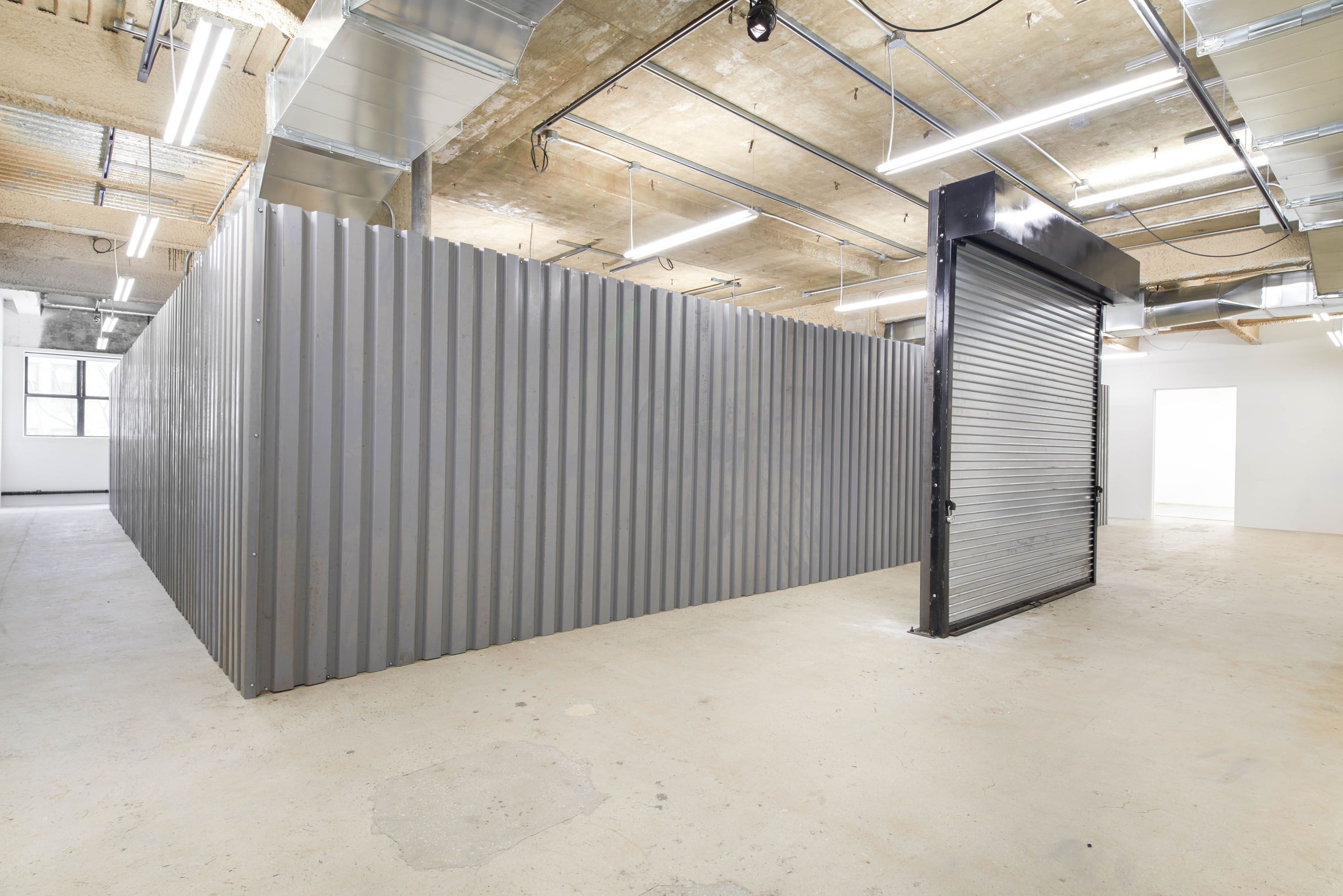
New York, NY...Venus Over Manhattan is pleased to present Ishtar, an exhibition of new site-specific work by Charles Harlan opening February 12, 2014
Drawing inspiration from Land Art of the 1970s, Harlan avails himself of the most common materials at hand - including such hardware store staples as ladders, shipping palettes, and one-ton metal pipe - in his large industrial works. Huge in scale, Minimalist in form, and shown both indoors and out, Harlan’s art has often been referred to as Duchampian in its reliance upon readymade components, its deceptive simplicity, and it spatial humor. His stacking and layering of recognizable, utilitarian materials renders surprisingly potent forms that invite unexpected associations.
At Venus Over Manhattan, Harlan takes as his point of departure the book The Descent of the Goddess Ishtar Into the Lower World. The ancient Babylonian goddess of fertility, love, sex and war, serves as the artist’s answer to Venus, the Roman goddess of love (and de facto patroness of the gallery, whose name pays tribute to the 1940s deco relief ‘Venus of Manhattan’ adorning the façade of 980 Madison Avenue). According to Harlan, the new work on view was inspired by a specific passage of the text in his source material:
Ishtar on arriving at the gate of the land of no return
To the gate keeper thus addressed herself
Gate keeper, ho, open thy gate/
Open thy gate that I may enter
If thou openest not the gate to let me enter I will break the door
I will wrench the lock, I will smash the doorposts, I will force the doors
Upon arriving at Venus Over Manhattan, visitors will be greeted by Harlan’s 10 foot roll- down gate, a barrier to circumnavigate en route to a new world: The gallery’s main space is enclosed, in Harlan’s words, in ‘an endless wall of corrugated steel’ that runs parallel to
the perimeter walls, without any doors or windows offering access to what lies within the structure. The unbroken wall creates a corridor that beckons one forward but leads inevitably back to where the journey begins. With five feet of distance between Harlan’s steel wall and the sheet rock envelope of the gallery, visitors must pass through a confining channel and, in turn, mixed emotions and sensations.
Harlan’s work invites contemplation of the ways in which we adapt to and absorb the toughness of the urban landscape. The pristine, immutable walls that challenge visitors to Ishtar are made from the same sheet metal fencing that encloses myriad outdoor parking lots and construction sites, and hosts graffiti and flurries of advertisements throughout the cityscape. But whereas the world around us is wild and feral, Harlan’s work is carefully ordered, throwing into higher contrast the realms of tumult inside.
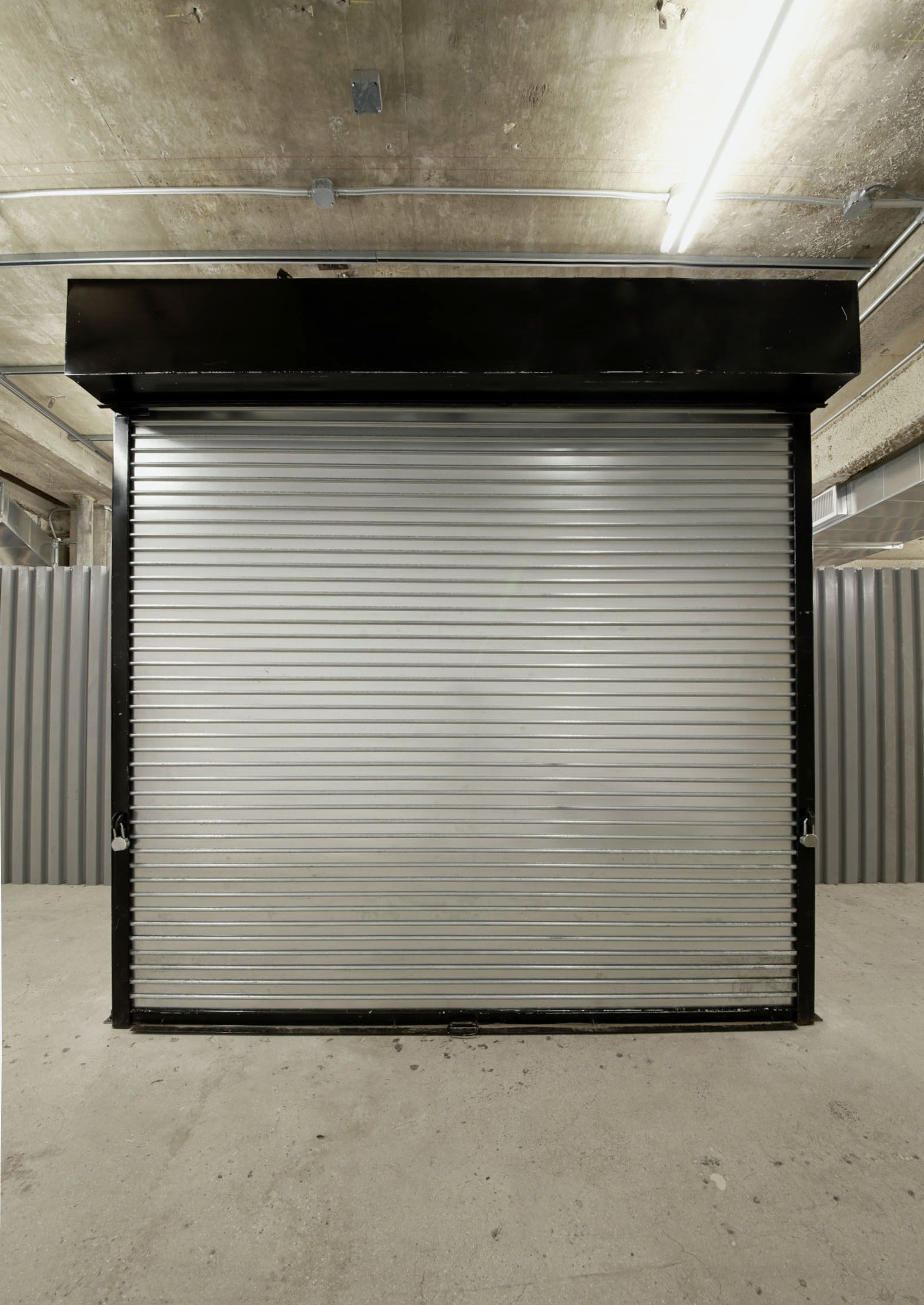
steel
120 x 120 x 15 in
305 x 305 x 38 cm
installation view, Ishtar, Venus Over Manhattan, New York
(IMAGE PLACEHOLDER, MARIE WAITING FOR UPDATED IMAGE FROM VOM)
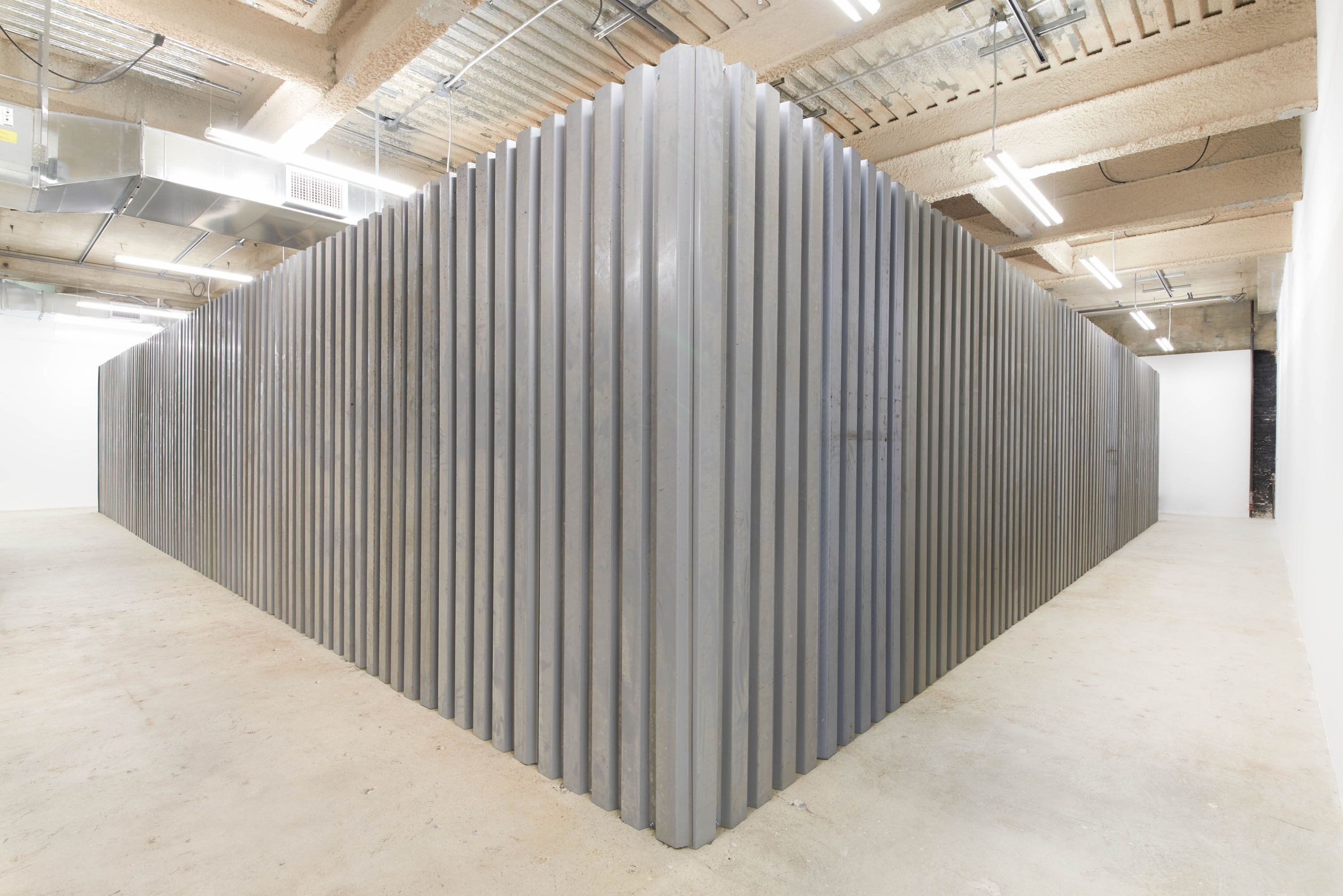
steel
dimensions variable
installation view, Venus Over Manhattan, New York
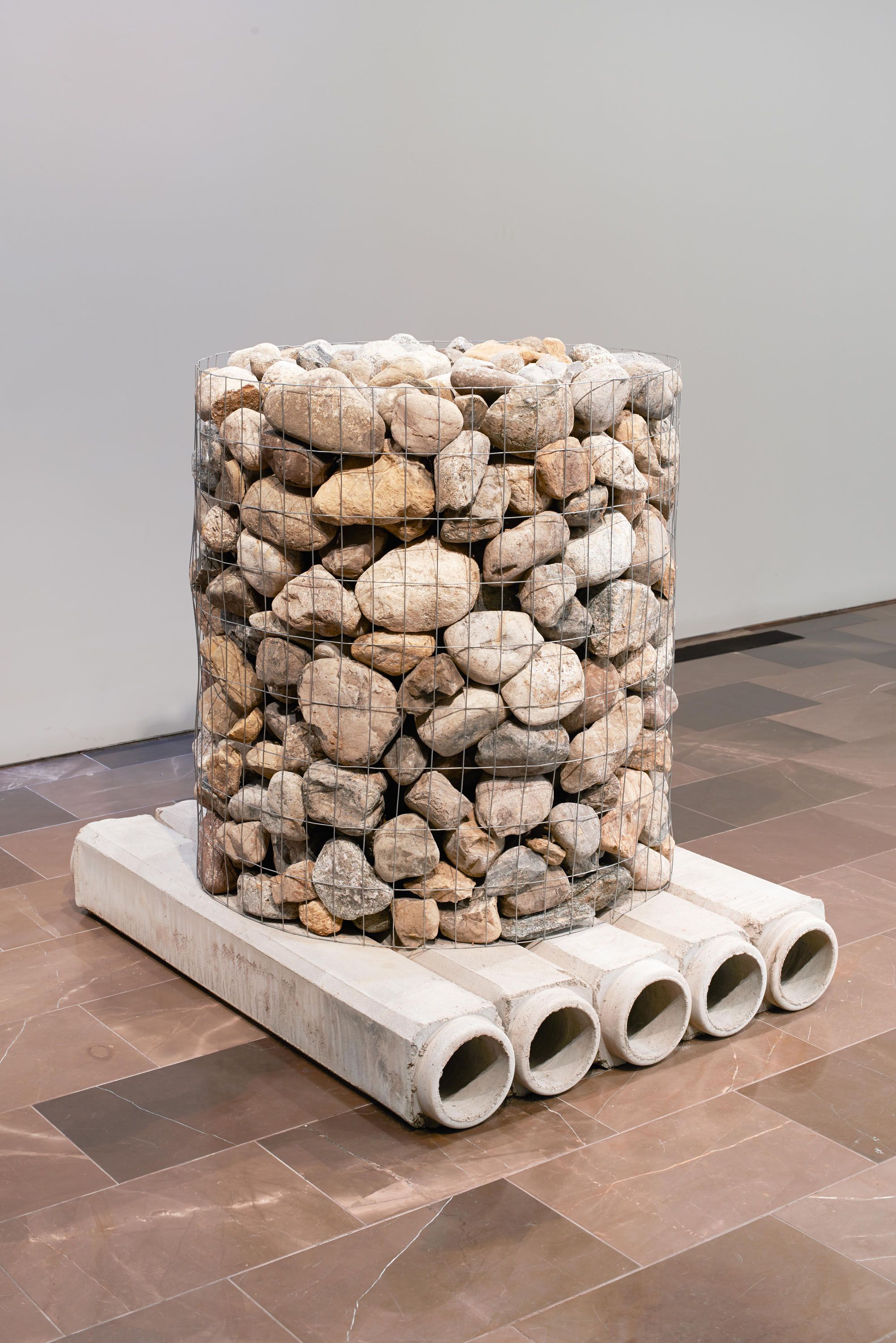
concrete conduit, rocks, wire mesh
40 x 40 x 44 in
101.5 x 101.5 x 112 cm
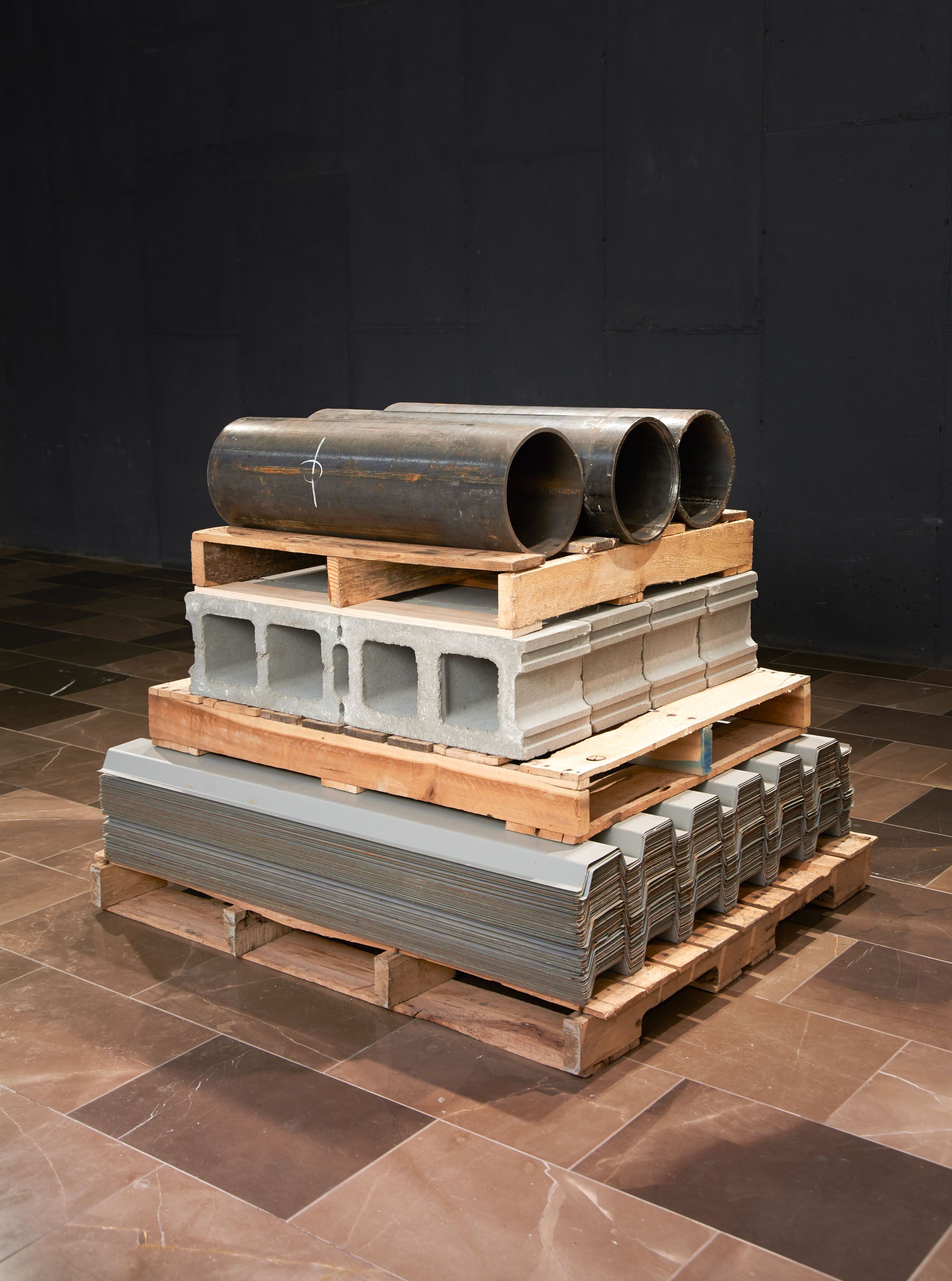
wood, steel, concrete
38 x 40 x 48 in
96.5 x 101.5 x 122 cm
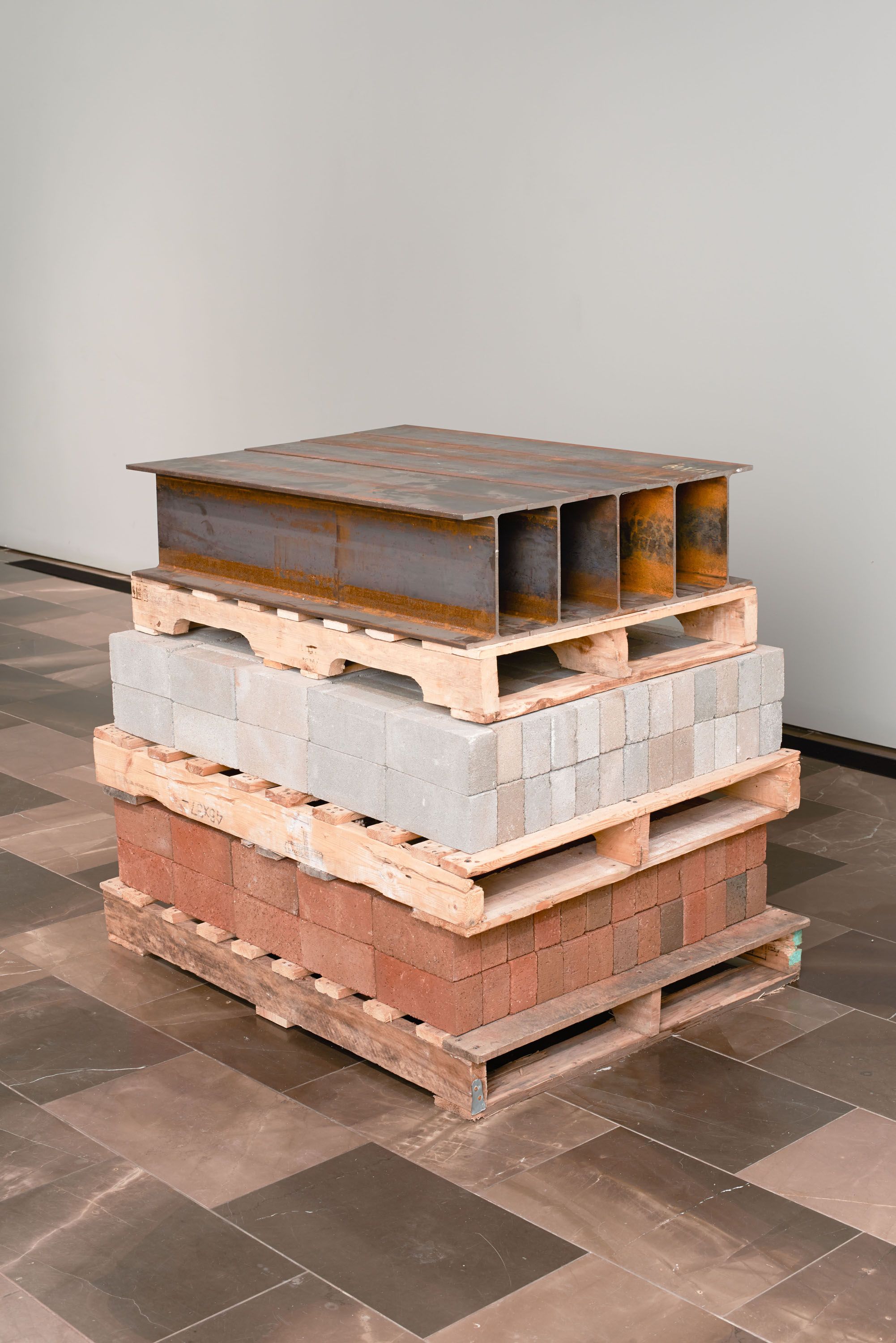
wood, brick, cement block, steel
37.5 x 32 x 43 in
95 x 81 x 109 cm

concrete, steel
84 x 46 x 8 in
213.5 x 117 x 20 cm